A brief comparison between Acid vs Base Database Transaction Model
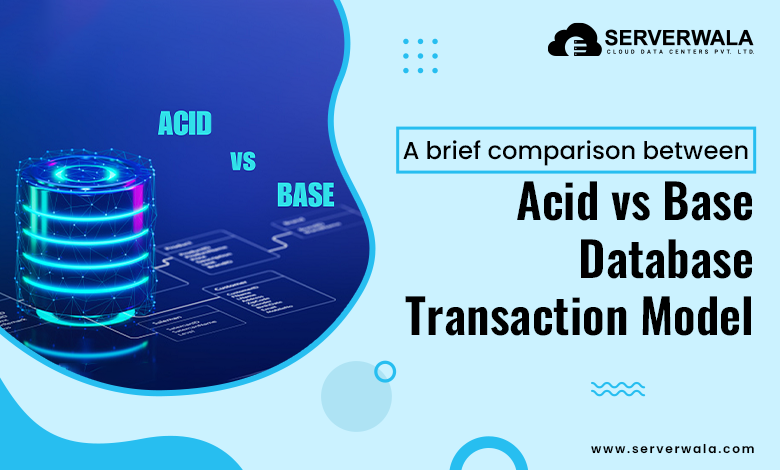
Preface
In database management, handling transactions efficiently while ensuring data accuracy is critical. Two popular models—ACID and BASE—address these needs, but in different ways. ACID (Atomicity, Consistency, Isolation, Durability) offers strict data consistency and dependability, commonly used in traditional relational databases. BASE (Basically Available, Soft state, Eventually consistent), on the other hand, favors high accessibility and scalability, often found in distributed NoSQL systems.
Comprehending the key differences between ACID and BASE is essential for picking the right model for your application. This comparison will enable you to take educated moves about how to manage your database transactions effectively.
ACID Model
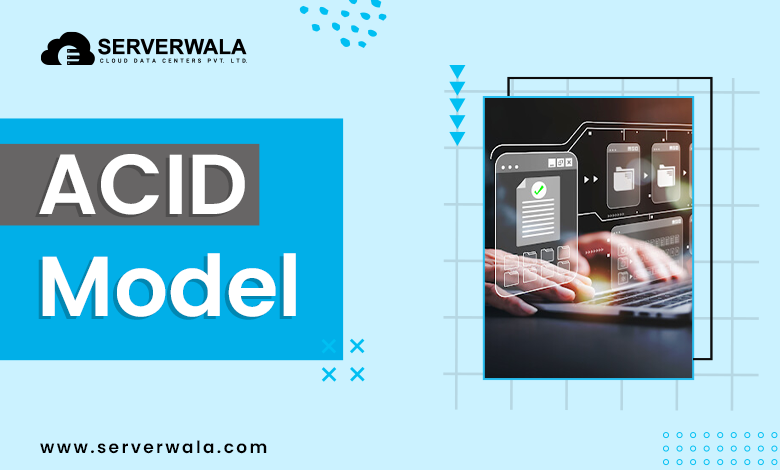
The ACID model is designed to assure dependable transactions in a database. Each transaction adheres to four key principles:
- Atomicity guarantees that each part of a transaction becomes successful or fails together. If any of the parts fails, the entire transaction rolls back, letting the database unmodified.
- Consistency assures that transactions bring the database from one valid state to another, preserving data integrity. This avoids data corruption or loss.
- Isolation means that transactions are independent. Intermediate states of a transaction remain invisible to other transactions until the process is fully complete.
- Durability makes sure that as soon as a transaction is committed, it is permanent. Even in the situation of a system disruption, data remains intact.
These properties make the ACID model ideal for applications that need robust data consistency, like financial systems.
ACID Use Case Example
Let’s consider a banking application to illustrate the ACID model. Imagine a customer moving money from one a/c to another. The process consists of debiting one a/c and crediting another.
- Atomicity makes sure that both the debit & credit operations succeed as a unit. If one part fails, neither account is changed.
- Consistency guarantees that the total balance across the accounts remains valid. If a failure happens, the system gets back to its previous state.
- Isolation ensures that if another user is performing a transaction at the same time, they won’t see any temporary changes in either account. They only see the final result.
- Durability makes sure that after the transfer completes, the transaction is saved permanently in the database. If the system gets destructed, the change remains intact when it recovers.
This strict level of control makes the ACID model perfect for scenarios like this, where accuracy and data integrity are non-negotiable.
Which Databases are ACID compliant?
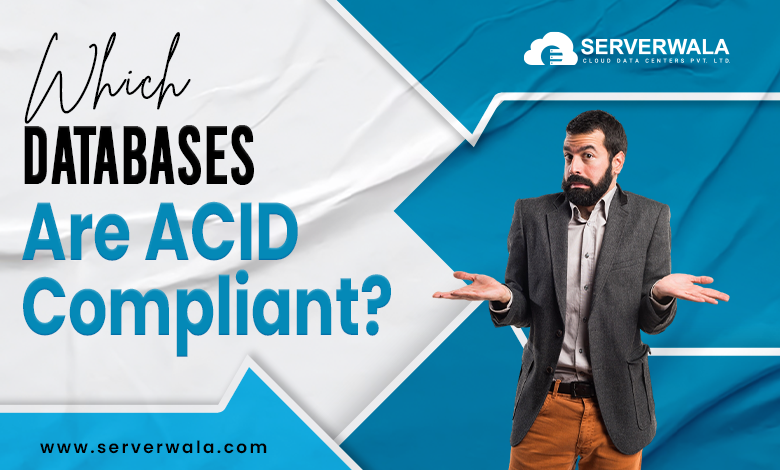
Several popular databases adhere to the ACID principles to ensure reliable and consistent transactions. Most traditional relational databases are designed with ACID compliance as a core feature. Some of the most well-known include:
- MySQL: This open-source database is widely used for web applications. It supports ACID compliance through its InnoDB storage engine, ensuring data integrity and reliability across transactions.
- PostgreSQL: Known for its robust feature set, PostgreSQL offers full ACID compliance. It’s highly regarded for its strong adherence to transactional integrity and support for complicated inquiries and data structures.
- Oracle Database: As one of the industry leaders, Oracle is designed to handle large-scale, enterprise-level applications. It guarantees full ACID compliance, making it a preferred choice for critical systems in industries like finance and healthcare.
- Microsoft SQL Server: This widely-used database is ACID-compliant, particularly in handling high-volume transactions. It’s favored for enterprise solutions where maintaining data consistency is vital.
- IBM Db2: Designed for high performance and scalability, Db2 fully supports ACID transactions. It’s commonly used in industries requiring secure, large-scale transaction processing, like banking.
While NoSQL databases often prioritize flexibility and scalability over strict consistency, some newer NoSQL solutions—like MongoDB and Cassandra—offer configurable levels of ACID compliance for certain operations. However, they may still lack full ACID compliance across distributed environments.
These databases, adhering to ACID principles, ensure that your data remains consistent, reliable, and accurate even during system failures or complex operations.
The BASE Model
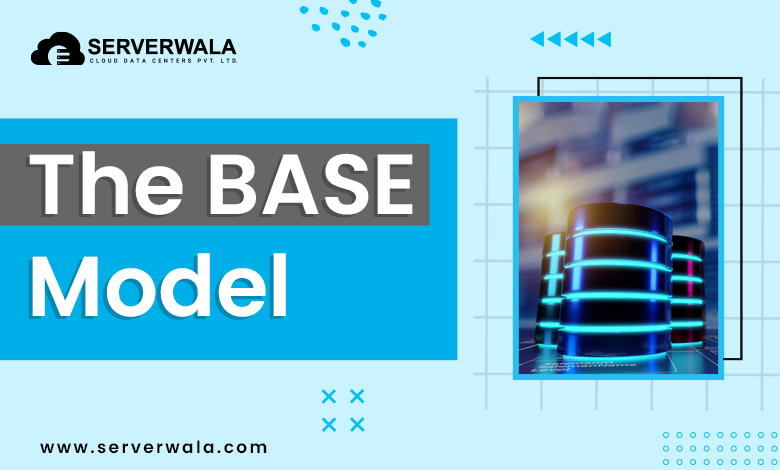
The BASE (Basically Available, Soft state, Eventually consistent) model is designed for distributed databases where accessibility and scalability are prioritized over strong consistency. Unlike ACID, which ensures immediate consistency, BASE accepts that some data might be inconsistent temporarily. This approach is common in large, distributed systems like NoSQL databases.
BASE focuses on three core principles:
- Basically Available: The system assures accessibility, meaning the data is almost always accessible. Even during partial system failures, the system remains operational.
- Soft State: The system allows the state of the data to modify over time. Data might not always be consistent across all nodes, but it’s acceptable as long as eventual consistency is achieved.
- Eventually Consistent: Instead of ensuring immediate consistency, the system guarantees that over time, all nodes will have the same data. This delay in synchronization allows the system to be more responsive under heavy loads.
BASE is ideal for systems that need to administer huge volumes of data & traffic while prioritizing availability and functioning.
BASE Use Case Example
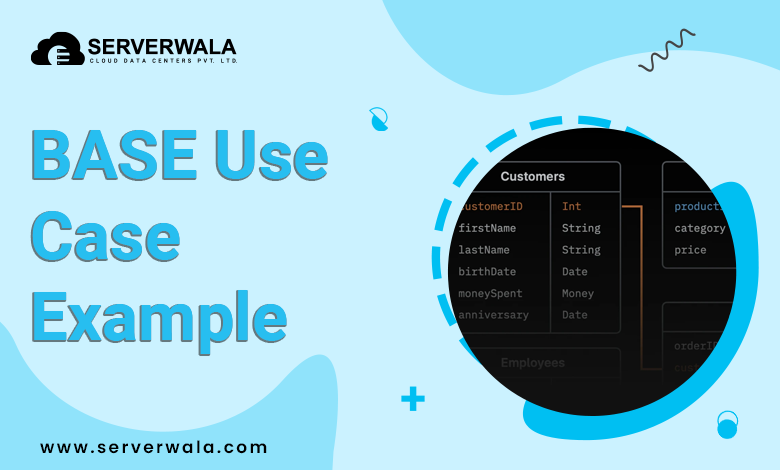
Consider an online retail platform, like an e-commerce site, that experiences high traffic during sales events. The BASE model comes into play when a customer places an order.
- Basically Available: The system accepts the order, even if some backend services are temporarily down. Users can interact with the website without being affected by infrastructure issues.
- Soft State: After placing the order, the status might not immediately reflect across all databases. Some nodes may show different order details for a short period, which is acceptable within the system’s design.
- Eventually Consistent: Over time, the different nodes sync, and the order status becomes consistent across all parts of the system. Though the data was temporarily inconsistent, it eventually becomes accurate, providing a seamless user experience during high-traffic periods.
This example highlights how the BASE model ensures availability and user satisfaction, even if data consistency is delayed.
Which Databases are Using the BASE Model?

The BASE model is most commonly implemented in NoSQL databases, which prioritize scalability and high availability. The most employed BASE model databases include:
- Cassandra: Developed by Facebook, Cassandra is a extremely scalable distributed database that follows BASE principles. It offers eventual consistency, making it suitable for massive data loads across multiple nodes.
- Amazon DynamoDB: DynamoDB is a cloud-based NoSQL database service. It provides high availability and scalability, sacrificing strong consistency for speed and performance, following the BASE approach.
- MongoDB: As the most prevalent NoSQL databases, MongoDB allows configurable consistency levels. While it can offer ACID-like transactions for certain operations, it often operates on BASE principles, particularly in distributed environments.
- Riak: A distributed NoSQL database, Riak emphasizes high availability as well as resilience to failure. It guarantees that the system stays operational, even at the cost of immediate consistency, aligning with BASE principles.
These databases are designed to handle the needs of distributed systems, prioritizing availability, performance, and scalability. They’re commonly used in applications with high user traffic or large amounts of unstructured data.
When to employ: ACID compared with BASE
ACID vs. BASE: Key Differences
ACID and BASE differ significantly in how they handle transactions, consistency, and performance.
- Consistency: ACID ensures immediate consistency. Data is consistent across the system after each transaction. BASE, on the other hand, uses eventual consistency. Data might be temporarily inconsistent, but it will eventually sync across nodes.
- Availability: ACID prioritizes strict consistency over availability. This can lead to delays or downtime during high traffic. BASE, however, prioritizes availability. The system stays running even if some data is temporarily inconsistent.
- Transaction Control: ACID uses strong control over transactions with atomicity, ensuring all-or-nothing execution. BASE offers more flexibility, allowing partial results to be processed even if not fully consistent.
- Performance: ACID databases can be slower due to the need to maintain strict consistency and isolation. BASE databases, being more lenient on consistency, usually offer better performance and scalability, especially in distributed systems.
These fundamental differences guide the choice of model based on your system’s specific needs and goals.
ACID vs. BASE: Which One is Good for You?
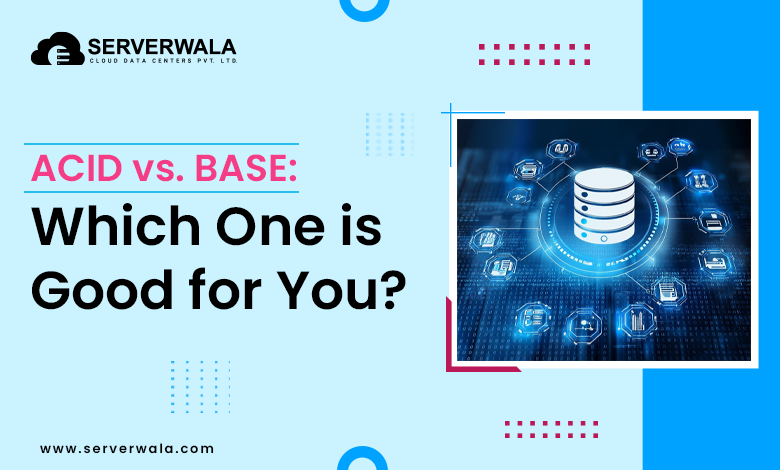
The choice between ACID and BASE relies on your application’s necessities for consistency, availability, and functioning.
- Use ACID if your application needs strict data integrity. Financial arenas, healthcare corporations, & other industries where accuracy is paramount rely on ACID to avoid data corruption. If consistency is non-negotiable, ACID is your best bet.
- Use BASE for distributed systems requiring high availability and scalability. Social media environments, e-commerce sites, and huge-scale web applications often favor BASE. These environments handle massive traffic and prioritize performance over immediate consistency. BASE’s eventual consistency model works well when a slight delay in data sync won’t harm the user experience.
Ultimately, if your system values strong data guarantees, choose ACID. For flexibility and scalability, particularly in distributed systems, BASE might be the better option. Your choice should align with how much consistency, availability, and performance you are willing to trade off.
Also Read: How to Change a Directory Using the cd Command in Linux?
Conclusion
Choosing between ACID and BASE depends on your application’s specific requirements for data consistency, availability, and scalability. ACID ensures strong data integrity, making it perfect for systems that cannot tolerate errors—such as banking or healthcare. BASE prioritizes availability and performance, which is ideal for high-traffic distributed systems, like e-commerce or social media platforms.
Neither model is inherently better; it’s about finding the right fit. If you need guaranteed accuracy, go with ACID. If your system demands speed and flexibility at scale, BASE is likely your solution. The choice reflects the trade-offs you are willing to make between consistency and availability.





